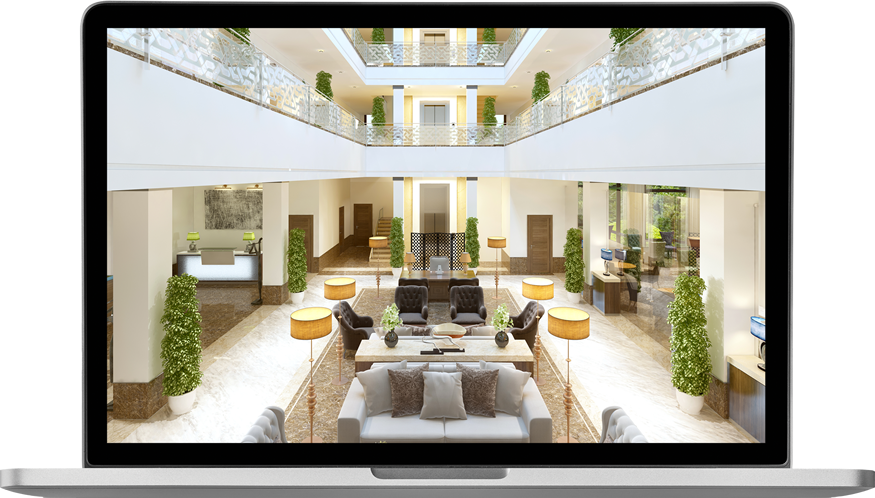The quest to create epic content is real, my friends, and it is reaching mythic levels. Everyday, SEOs write, speak, and share content about the correlation between dynamite landing pages and search engine dominance. The race for evergreen content is the biggest trend in the current landscape of SEO, and the data cannot be denied. Unfortunately, striving for such lofty goals requires significant time, resources, and cash flow. In the real world, modest budgets, finite client hours, and unexpected obstacles mount barriers on the journey to behemoth content. Fortunately, you don’t actually have to reinvent the wheel to create great content. By making efficient use of search analytics, Google AdWord data, and some crafty search engine sleuthing, you can create great content with limited time and resources. When it is time to create your next landing page, take advantage of these simple techniques to become an Alpha King in the SERPs.
The Conceit
For the purpose of this illustration, we will examine a fictional hotel in the scenic town of Munster, Indiana, located just across the state line from suburban Chicago. Let’s call it the Gumball Inn Munster. We will explore the steps a hotelier can take to create epic content, from idea generation to copywriting to implementing interactive elements on a brand new landing page. With the right data and a little bit of savvy, you’ll level up in no time.
Strap in. We’re going to Munster.
Generate Your Next Landing Page Idea
Challenge the First: Landing Page Ideation
“It’s been a real long time since I’ve published a new landing page,” a befuddled hotelier may admit. “Even worse, I don’t know what to write about. What the heck should I do?”
Head to Search Console: The Proof is in the Data
In theory, you can write about anything. It’s the internet, dude. However, to write useful content with an increased likelihood to perform well in the SERPs, look to your Search Console data. Google Search Console tells you exactly what people are typing when they find your website, how many times each phrase is searched, where each query ranks in the SERPs, and how many clicks each phrase receives. It is pretty amazing stuff. In plainer terms, you know which queries Google associates with your hotel’s websitesite. Do not reinvent the wheel, my friends. Leverage this data to determine the most effective topic for your unique site.
Search Console Walk-Through
I know, I know. I just dropped a bunch of technical jargon. Take a look at this step-by-step walkthrough to extract the perfect landing page topic for your hotel website from Search Console’s (manageable) expanse of data.
Find the Search Analytics Report
Log into your hotel website’s Google Search Console account and navigate to the Search Traffic menu on the left-hand side. Click into the Search Analytics report and behold the colossal wealth of website data.
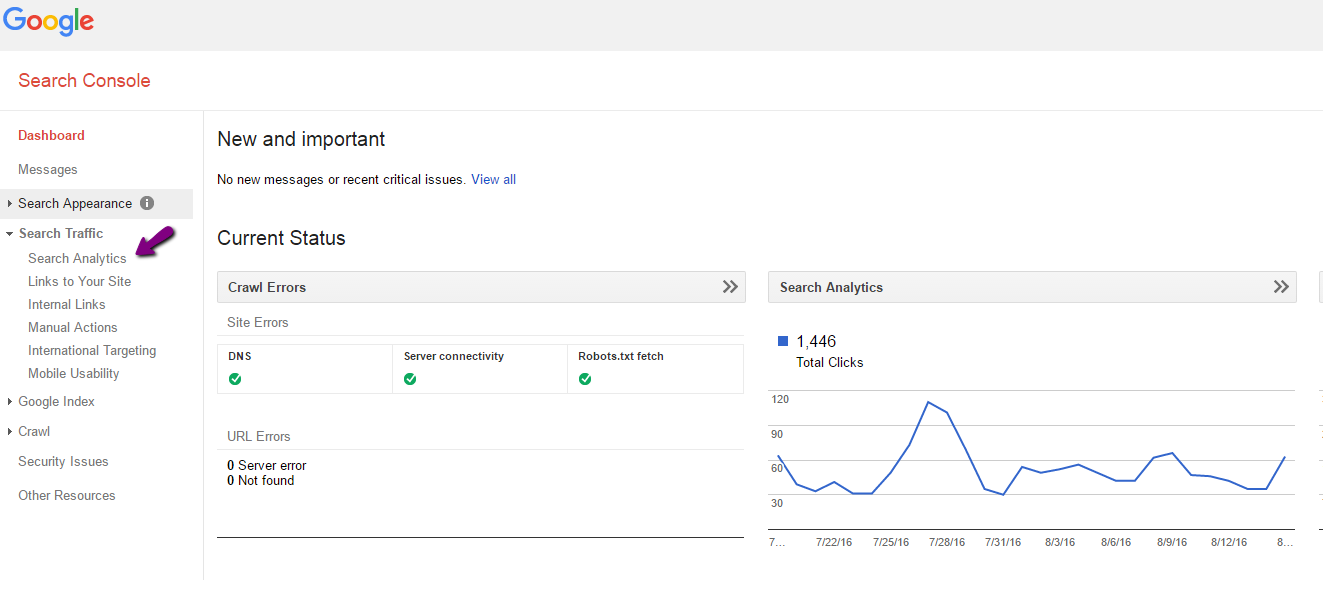
Filter Out Branded Keywords
Since the purpose of this project is to identify opportunities to reach new customers, remove all branded keywords from this report. By filtering out searches for your specific hotel from the Search Analytics report, you can better evaluate how your hotel fares in the competitive realm of Google’s organic search.
In the Search Analytics report, click into the filter menu and select “Filter Queries”.
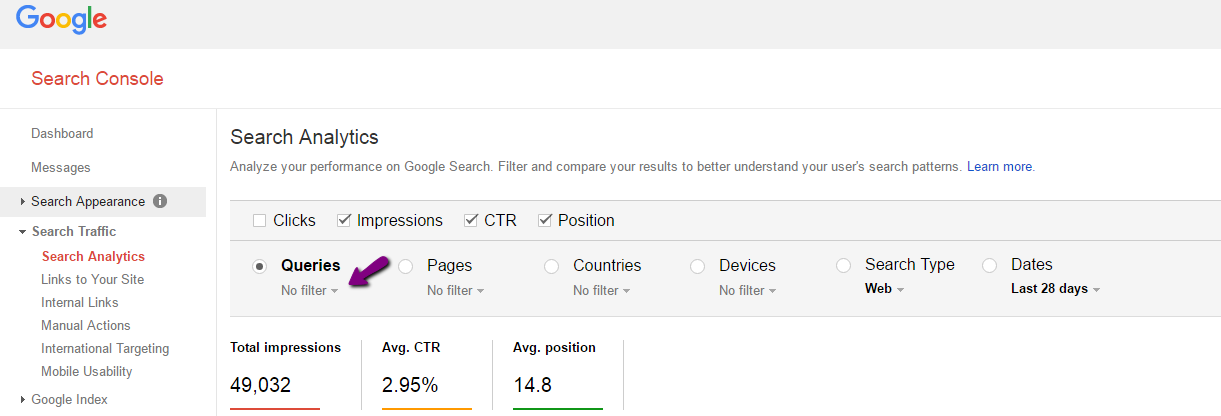
Then, type in your hotel’s brand name to remove the majority of searches for your specific hotel from the report. To account for clumsy thumbs, misspellings, and lazy searches, only type in the core elements of your brand name. For example, filtering out “gum” would remove variations such as “Gumball Inn,” “Gum Ball Inn,” “Gumble Inn”, “Gumball Suites”, and a host of other wonky permutations.
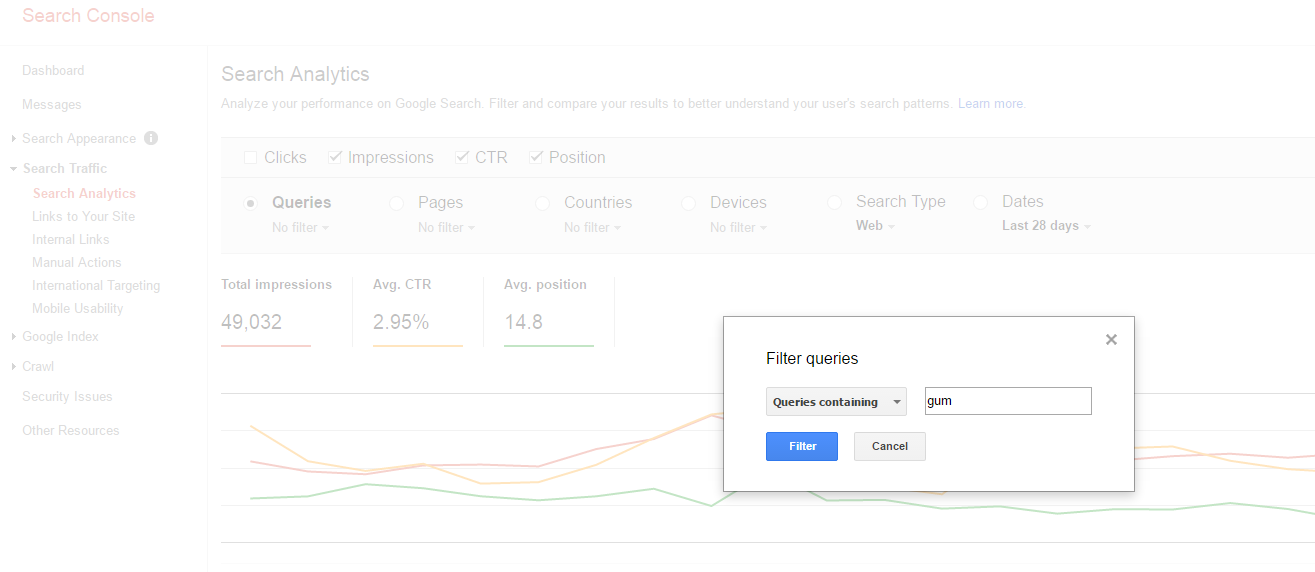
Identify Relevant & Successful Search Queries
Upon filtering out branded searches, the Search Analytics report shows which generic queries Google associates with your website. You should see plenty of hotel, accommodations, and dining (if applicable) queries tied to your location. However, nestled among permutations of “hotel in Munster” and “hotels near Munster”, you will find opportunities for valuable, niche content. Pursue these opportunities. By expanding your content on these specific topics, your website will see increases in search engine visibility, website traffic, and online hotel bookings.
Take a look:
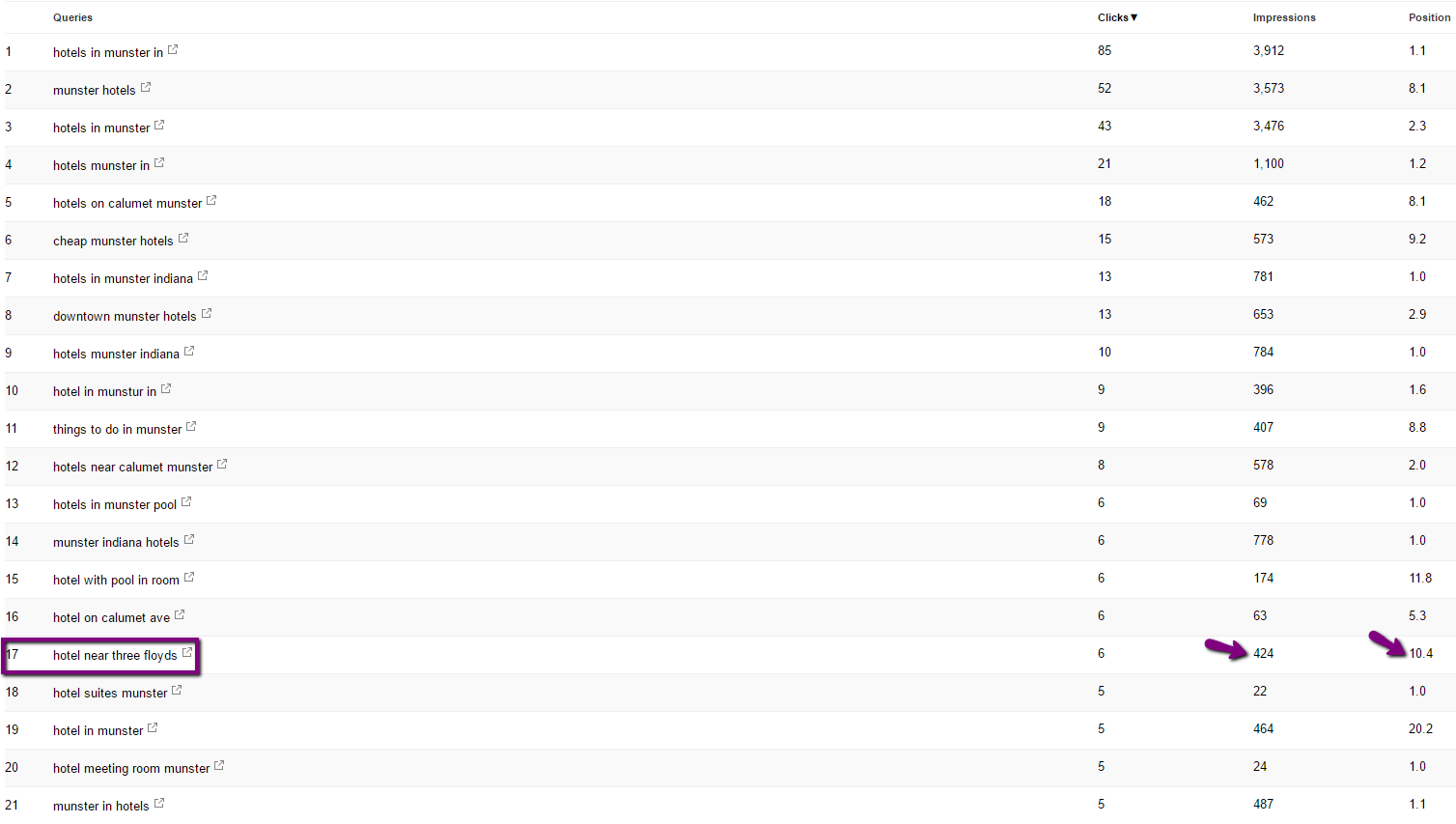
Based upon the data above, we clearly see that our fictional Gumball Inn Munster hotel should choose “hotel near three floyds” as its next landing page topic. The website’s 424 impressions for the query show people are searching for this specific phrase and users are seeing the Gumball Inn on search results pages. Furthermore, the data shows the hotel, with an average search position of 10.4, is most often found on the top of the second SERP. This average position statistic tells us Google considers the Gumball Inn a decent 3 Floyds lodging option and that expanded, optimized brewery content could bump the hotel website onto the first SERP. Launch a landing page about this topic to increase Google’s confidence in recommending the Gumball Inn as Munster’s premier 3 Floyds accommodations.
Pretty easy, huh? By analyzing the data, our landing page topic all but chose itself. Use Search Analytics to eliminate the time, energy, and consideration process of topic ideation, to streamline landing page creation, and to confidently pursue a valuable, worthwhile content endeavor.
Use AdWords Data to Write Effective SEO Copy
Challenge the Second: Landing Page Copy
“Okay, Don, I’ve decided on a topic,” the vexed General Manager of the Gumball Inn may contest, “but I’m no expert on the subject! How in tarnation do I know what to write? I don’t know a darn thing about hop varietals, IBUs, specialty malts, heavy metal music, or Dungeons & Dragons.”
Head to AdWords: More Data, More Answers
Let Google AdWords write your outline! Anyone with a Google account can retrieve valuable data regarding the most popular search terms for any topic. Google AdWords’s Keyword Planner lets you see how many times people search for 3 Floyds phrases and 3 Floyds related topics. In plainer terms, AdWords tells us which information people want to know more about, and the data does not lie. Build your outline around your topic’s most popular keywords to optimize your landing page for search and deliver the (quantifiably) most valuable information for users.
Alright, let’s get down to brass tacks. How do we use AdWords data to efficiently and effectively write optimized copy?
Get Keyword Search Volume for Your Topic
First, log into Google Adwords and navigate to the Keyword Planner, located in the “tools” dropdown menu:
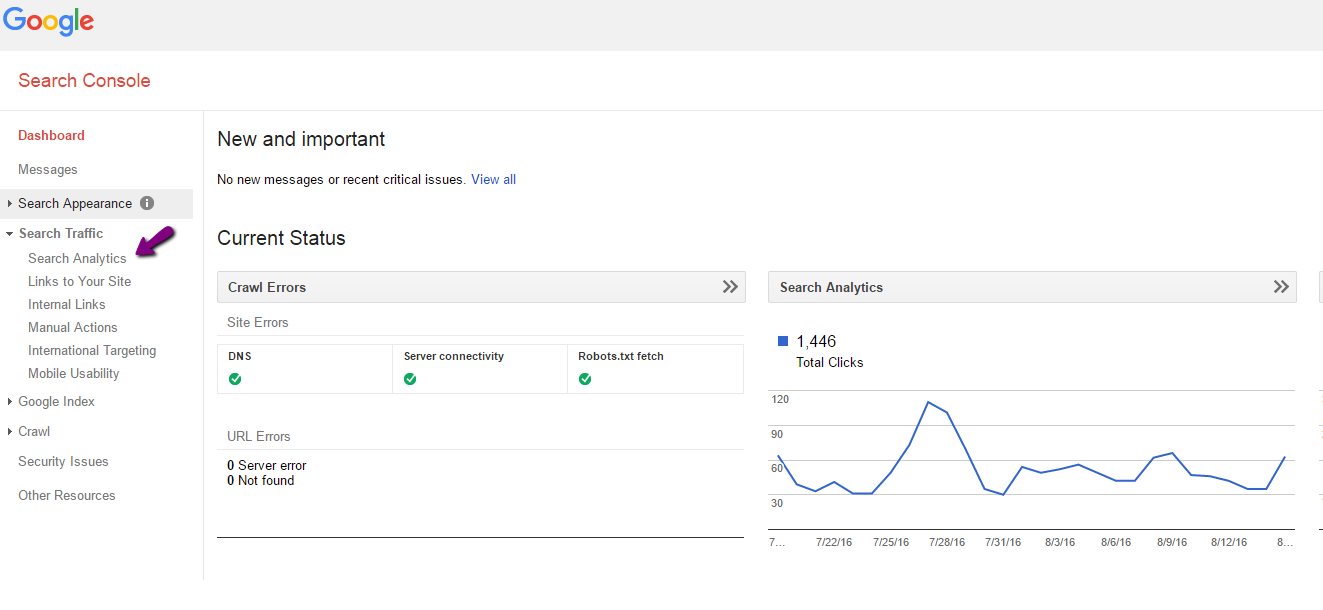
Click into the “Search for new keywords using a phrase, website, or category” dropdown and click into the “Your product or service” field. Type in the primary keyword phrase that you identified in Search Console (hotel near three floyds) alongside other high-level phrases (3 floyds, three floyds, 3 floyds brewpub, etc) for your topic, separated by commas. Once we submit these phrases, AdWords will give us a bounty of search volume data on the phrases we provided, related topics, and commonly co-occurring topics. Parse through this data to determine the best page headers, verbiage, and information to include on the landing page. You don’t need to know a thing about your topic. The data will all but write your Jinx Proof outline.
Check out the aforementioned bounty of search volume data:
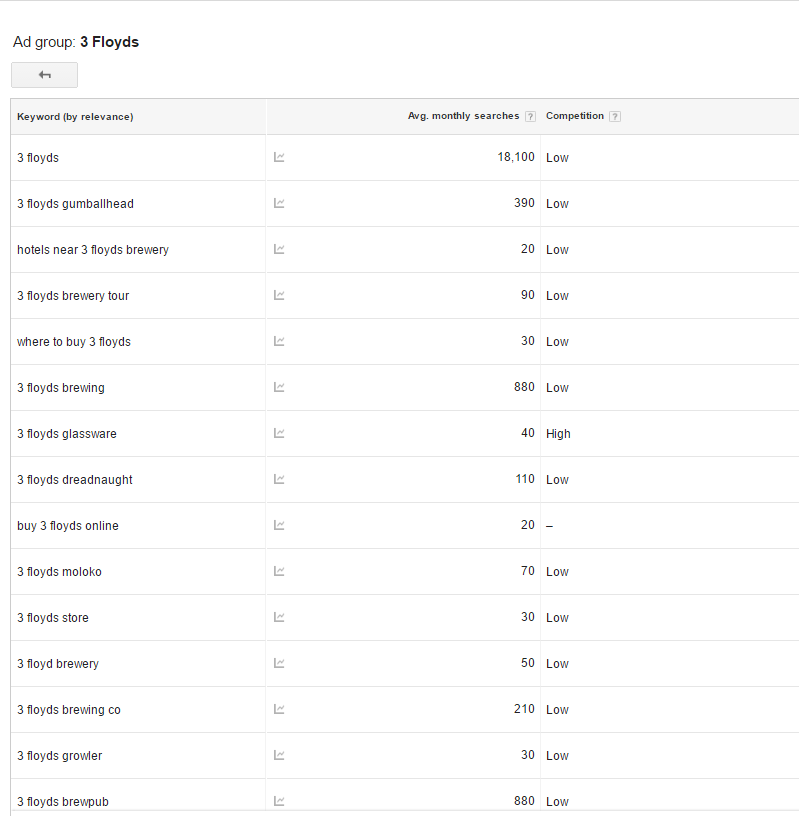
Decipher Your Keyword Planner Data
The Keyword Planner results show the most commonly searched topics surrounding the 3 Floyds Brewery and provide actionable insight for your upcoming landing page. First, we see that a lot of people dig 3 Floyds. We can also glean that Zombie Dust, Alpha King, and Dark Lord are important subtopics for the brewery. Since each ad group is clickable and contains a granular list of search volumes for specific keyword phrases, we can better explore how the beer geeks are searching.
Let’s click into our highest volume ad group. In this instance, click into the “3 Floyds” ad group, whose queries receive over 20,970 searches in an average month.

Analyze the ad group data to see what people are searching for and which topics users want to know more about. The above data shows that 3 Floyds enthusiasts seek information about brewery tours, the brewpub, their on-site store, popular beers like Dreadnaught and Moloko, and growlers. Talk about these things on your landing page. Phrases with the highest volume can (and often should) be your on-page headers.
Keep on Deciphering
After you have scoured your primary ad group, comb through other ad groups to determine important co-occurring topics. Including co-occurring topics is important to create robust content that your readers and the search robots will love. For your hotels near Three Floyds page, parse through Three Floyds (as opposed to 3 Floyds), Zombie Dust, and Dark Lord ad groups. You will discover that people go bonkers for the aforementioned undead pale ale and festival of the demonic stout and that a lot of people really want to know the brewery’s hours. Discuss these things on your landing page.
Keep Organized With Custom Keyword Plans
As you navigate from one ad group to another, the sheer amount of data can flummox even the most experienced marketers. To help users organize the most relevant data for individual projects, the Keyword Planner lets you create a custom plan and download only the data that you deem necessary. Next to each keyword, AdWords gives you the option to “add to plan”. As you bounce around the Keyword Planner, add important data from various ad groups to your plan. When you have aggregated all of the information you need for your landing page, download the information as a CSV or save to Drive.

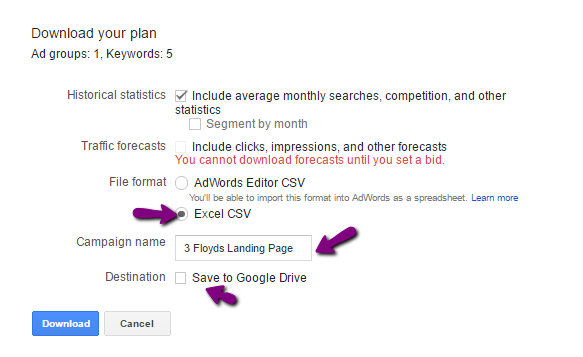
Put Your Data to Work
With this incredible quantity of invaluable data, writing your web copy should be a smooth, efficient, and painless process. Since you have a comprehensive list of user-friendly and search engine optimized topics, the copy will all but write itself. With some quick Googling, relevant hotel information, and strong calls to action, the actual words should come naturally. Simply string together compelling sentences answering the questions posed by the AdWords data, and your copy will contribute to monumental content that will put your hotel ahead of your competitors in epic battle for search engine dominance.
Optimize Your Copy for Conversions
Challenge the Third: Increasing Hotel Bookings
“Alright, friend, that was surprisingly painless. With my comprehensive keyword plan, I put together some baller copy about a topic I know nothing about,” the relieved Munster hotelier conceded. “But will this actually put heads in beds?”
Speak to Your Audience: Tell Us Why Your Hotel is Great
Creating great content based around Three Floyds brewery will effectively put your hotel in front of a highly qualified audience (aka beer vacationers) in organic search. That’s what epic content does and that’s a huge reason why SEOs love it. With such highly qualified visitors now on your website, take advantage of these simple techniques to drive bookings for your eager, beer-thirsty audience. As you build your epic 3 Floyds landing page, speak directly to your audience, add booking links in strategic places, highlight relevant amenities for your topic, and use GA data to create an effective sales funnel. Implement these basic conversion optimization techniques and your hotel will be teeming with hopheads, beer geeks, and bottle traders in no time.
Connect With Your Niche Audience
Channel your inner beer geek and speak directly to your audience by putting a hophead twist on your everyday amenities. Does your Munster hotel offer free breakfast and coffee? Sounds like a great hangover cure. Late night room service? #DrunkPizza! Do your rooms have mini-fridges to store growlers, bombers, and brewpub leftovers? How about a local shuttle? That’s a safe and free designated driver.
Include Strong Calls to Action
Make it easy for your audience to book a room. Include text and button links that send visitors to your booking engine and be specific with your calls to action. Instead of telling users to “Check Availability”, tell them to “Book Your 3 Floyds Hotel Room” or “Book Your Beer Geek Accommodations”. Make it clear that the user will be sent to the booking engine and let the ale aficionado know that beer nerds will feel at home in the Gumball Inn Munster. Simply put, be clear and direct, and remove any confusion from the booking process. Take a look at the calls to action this Denver hotelier employed to promote rooms for the Great American Beer Festival:

Create a Sales Funnel using Google Analytics Data
Some users will find the page and think, “This beer-friendly hotel is truly the Pride & Joy of Munster. I’d like to book a room.” Simply having strong CTAs and booking buttons should effectively convince users of this ilk choose the Gumball Inn over a competing Munster hotel. However, Internet users typically bounce from site to site as they compare properties and prices. To mitigate users’ proclivity to bounce, create a sales funnel by directing your users to the highest-converting pages on your website. Use Google Analytics data to determine where on your site users most commonly book and add text links, button links, and sidebars to funnel your visitors to your most effective content.
Identify Your Highest Converting Content
To identify your highest converting content, log into your hotel website’s Google Analytics account and navigate to the Goal URLs report, located under the Conversions and Goals tabs. This report shows from which pages of your website users click through to the booking engine. In this example, the data shows that after the home page, most visitors book on the accommodations and specials pages. Include links to these pages to create a high-converting sales funnel.
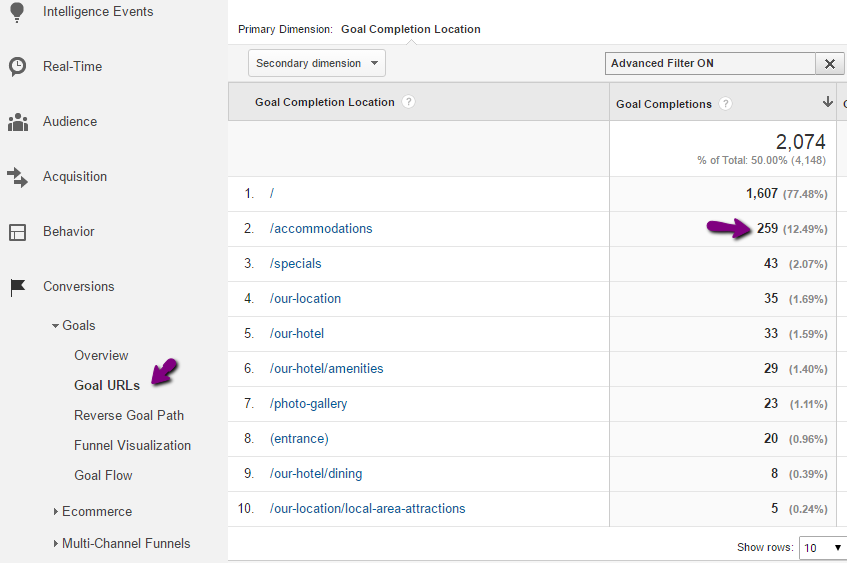
As you create your sales funnel, also consider which landing pages provide the best first impressions for users. Navigate to the Google Analytics landing page report to identify which landing pages offer the most convincing introduction to your hotel. In this example, we see that sessions beginning on the Specials page and Our Location page boast high conversion rates. Since the data shows that these pages successfully contribute to the conversion funnel, link to these pages from your new landing page.
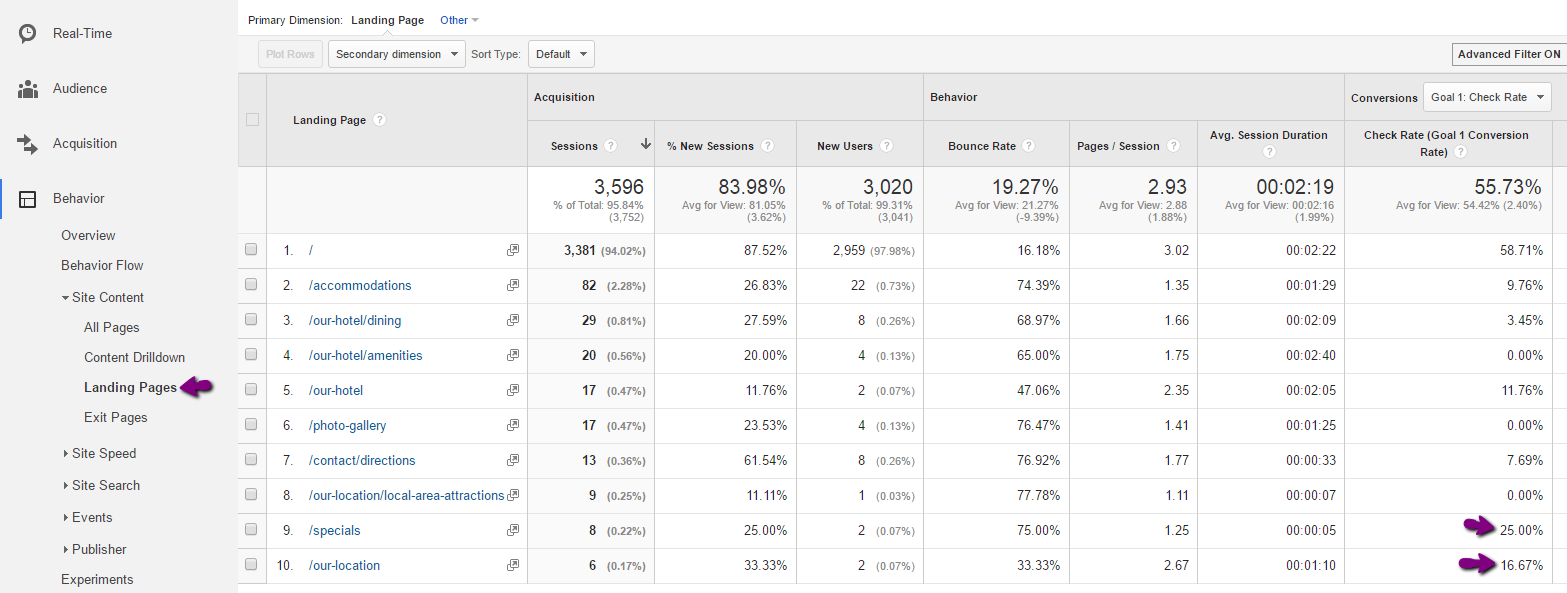
Reap the SEO Benefits of High Conversions
In addition to driving bookings and revenue for your hotel, high-converting, user-friendly content that fulfills a searcher’s needs also sends positive signals to Google’s algorithm. Google knows which pages are successful and ranks them higher in search. By creating a useful landing a page that answers your searchers’ questions, your hotel will enjoy increases in search engine visibility and website traffic.
Add Engaging Visual Elements
Challenge the Fourth: Finding Fast and Free Content
“Well, well, well, hotshot,” the enlightened Gumball Inn hotelier may admit, “you’ve brought some great content ideas to the table. However, this copy-heavy landing page looks kind of boring. How can I spruce my landing page so that it feels as fresh as the citra hops in my bottled-yesterday Zombie Dust?
Take Advantage of Free & Engaging Interactive Elements
Adding images, videos, and interactive elements are proven to increase conversions, but can often require hiring a photographer, purchasing images, or contracting web development work. However, there are quick, easy, and free ways to have your page looking sharper than a pair of $600 Lizard Shoes in no time. As you format your new landing page, request photography permissions from bloggers, embed some YouTube videos, and add interactive maps to add some pizzaz and improve the visual appeal of your content.
Source Photos from Businesses & Bloggers
Copyright law and expensive stock photo subscriptions can put a damper on curating a quick (and free) image strategy. To mitigate this obstacle, reach out to local business and beer bloggers to request photo permission usage. Since you have already performed extensive research for your landing page, you should already have a good idea of where to find images. First, send a quick email to 3 Floyds to see if they are willing to send you images. Since you are promoting their brewery, they may be happy to share images for such an enthusiastic local business. Did you come across any great beer blogs as you researched Dark Lord Day, War Mullet, or other mysterious 3 Floyds keywords? Shoot them a quick, friendly email. The outreach process only takes a few minutes and the payoff can add significant visual appeal and value to your website.
Embed Videos from YouTube
Add YouTube videos to your new landing page for a quick and easy way to include engaging, interactive content. Since videos can be embedded through iframes, you can include relevant content while circumventing intellectual property and copyright infringement issues. In short, iframes allow you to host content from other sources without actually posting any copyrighted materials on your website. Additionally, since part 6 of YouTube’s terms of service allow for the posting of videos on third party sites, your hotel can freely include relevant YouTube videos on your landing pages.
How to Embed a YouTube Video
YouTube videos can provide additional detail and interactivity to your landing page. With a bevy of beer reviews, Dark Lord Day recaps, brewer interviews, and virtual brewery tours, our Munster hotelier has a variety of options for complementary content. To add a YouTube video to your website:
- Parse through their video library
- Choose a relevant video
- Click the share button beneath the video
- Click the embed tab
- Copy the iframe code
- Paste the code to into the html of your landing page’s body content
- If you want to change the size of your video window, adjust the width and height tags
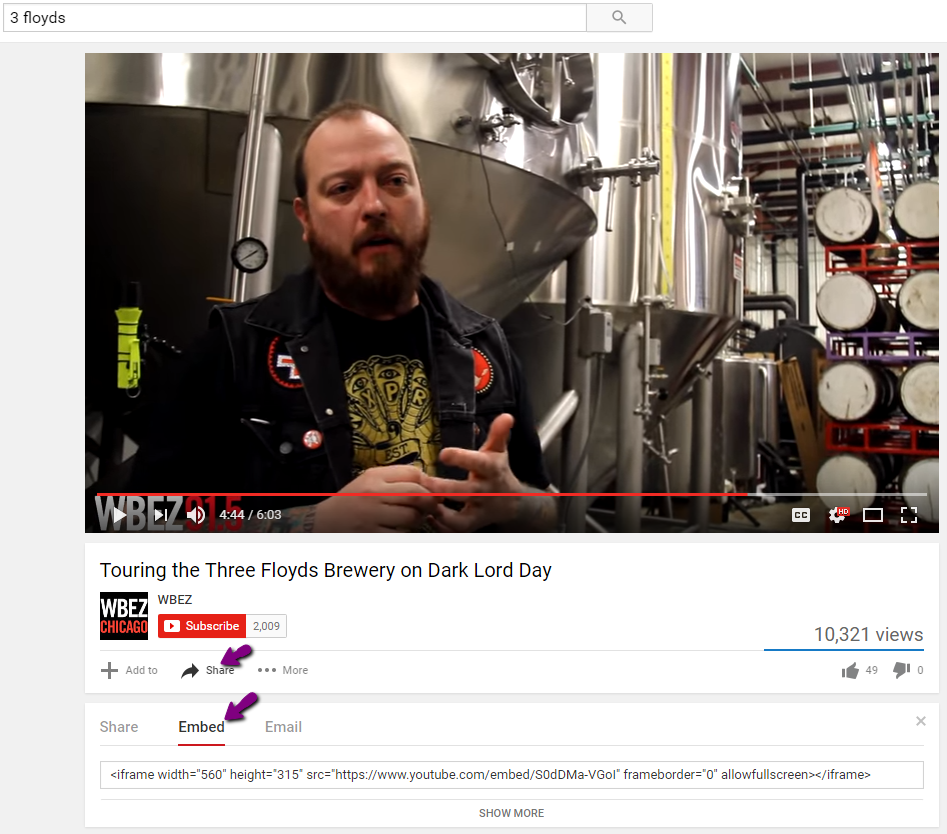
Do you want your embedded video to start at specific time? Plug in the video’s URL into YouTubeTime to show your visitors the most relevant content for your landing page!
Add Custom Maps
Take advantage of Google’s MyMaps to include free, fully-customized, user-friendly maps on your hotel’s newest landing page. With the ability to add your hotel, local businesses, directions, and different layers to a custom map, Google’s MyMaps provide an amazing, interactive opportunity to engage your audience. For example, the Gumball Inn could create their very own Munster Beer Vacation map to establish the hotel as the city’s premier accommodations for a 3 Floyds beer vacation. The hotel could include directions from the property to 3 Floyds as well as pins for local bottle shops, beer bars, taprooms, and some of Northwest Indiana’s lesser-known brewpubs.
Create a Custom Map
To create a custom map, log into Google MyMaps and click the red, create a new map button in the upperlefthand corner. Once you’ve named your map, you can add your hotel, include directions to the brewery, and create unique layers with a variety of segmented beer geek information. You can even customize the pins that appear on your map. Choose from Google’s array of icons or click on the camera button to pick a relevant photo or logo from Google Image search:
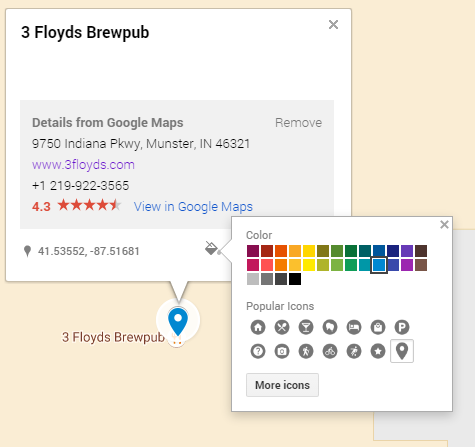
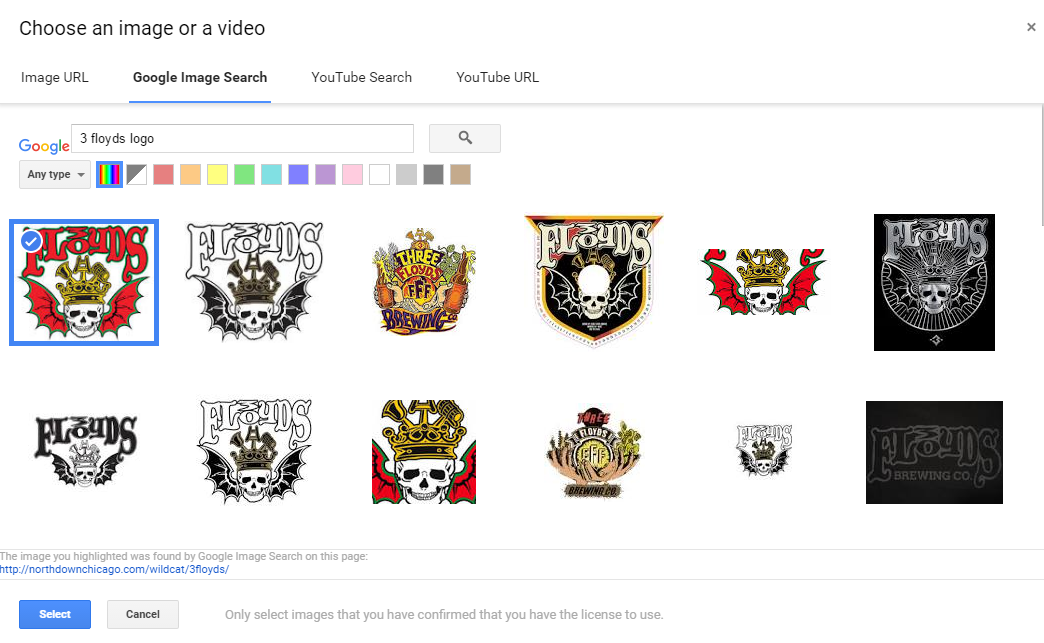
Embed Your Map
After you’ve added in your custom map’s relevant content, update the sharing permissions and embed the map to your website. First, click the share button in MyMaps and change who has access:
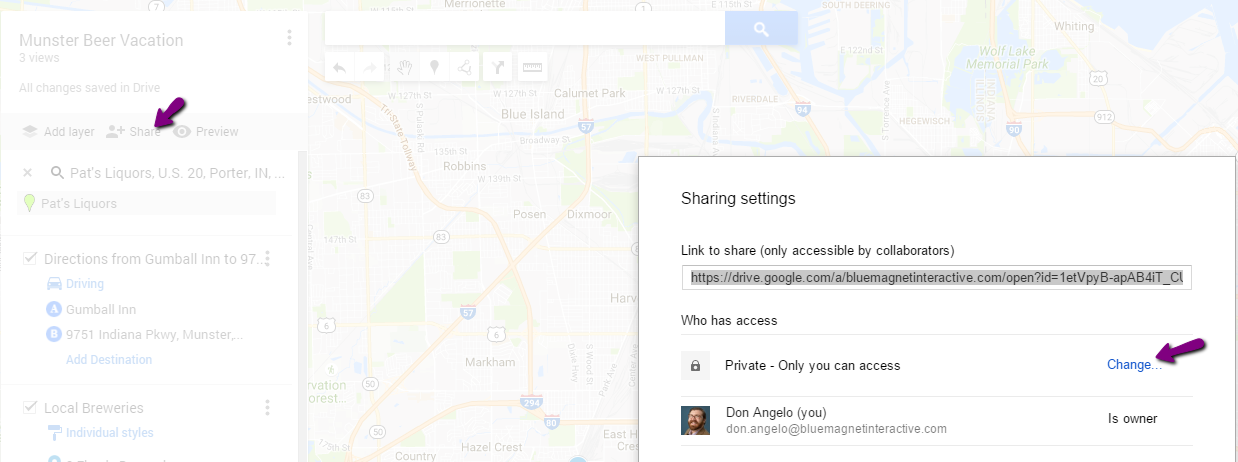
Update your link sharing permissions to public and click save:
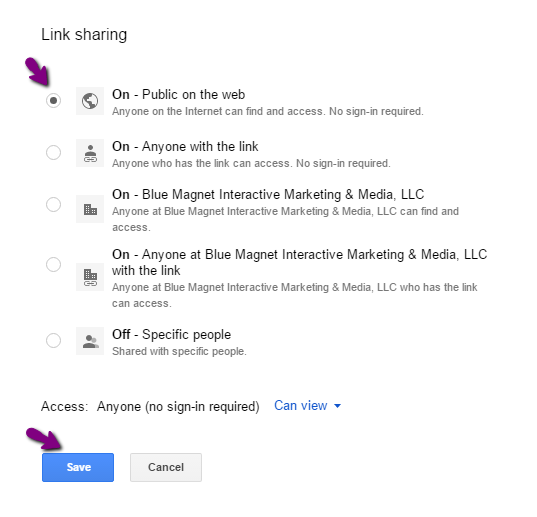
To get your iframe code and sharable link, click the three dots next to the title of your map, navigate to “embed on my site”, and copy the code provided. Paste this into the the body content of your landing page and let your beer nerd audience geek out about your amazing custom map:
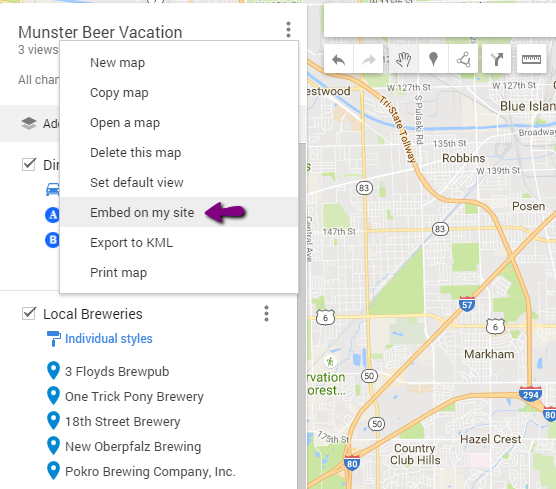
Once you’ve embedded your custom MyMap, you will have an interactive, engaging, user-friendly element that will look something like this:
Reap the Benefits of Fast, Free & Foolproof Content
Campaign Completed: Epic Content Created
The struggle is real when it comes to creating epic content with a modest budget and a limited amount of time; however, free Google platforms like Search Console, AdWords, YouTube, and MyMaps provide the tools to create amazing content that search engines and users will love. Let the data determine the right landing page for your website, the perfect topics for your content, and all but write your landing page. As you compose your landing page, speak directly to your target audience and add strong calls to action and interactive elements to ensure high conversion rates and drive revenue for your hotel. After your epic content is live, monitor your page’s strength with Google Analytics reports, order yourself a pint of War Mullet, and enjoy the sweet taste of digital marketing success as you see increases in search engine visibility, website traffic, and hotel bookings. Prost!
Want more handy digital marketing tips to better promote your hotel? Sign up for the Blue Magnet Interactive newsletter to receive more insider knowledge from the internet marketing nerds at BMI!




